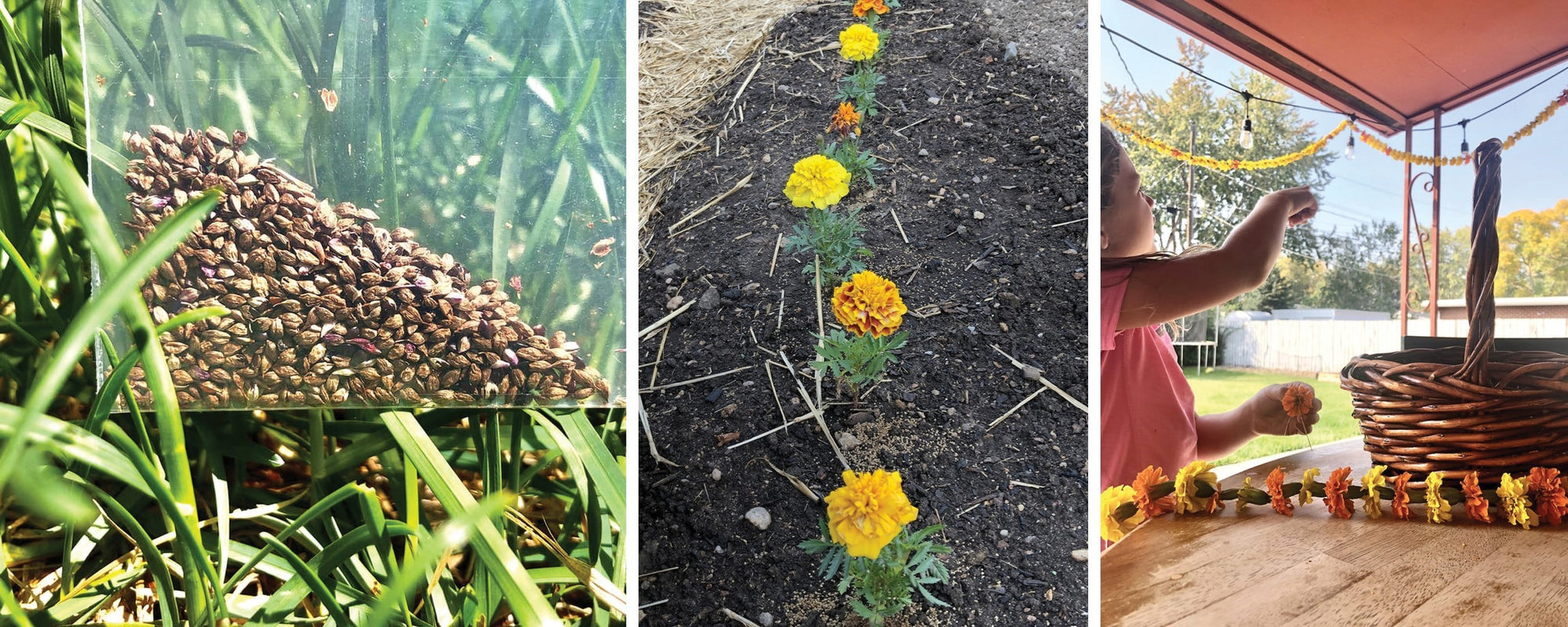By Carrie Miller
Our employee garden plots are one of the many perks at Schacht and we are so excited that it is finally planting season. Each spring, several of us dig in and prepare our soil for a long, hot, and hopefully fruitful summer.
Dye plants are a great option for any home garden, though you can also find them in the wild. A large variety of dye plants can be harvested in ditches or fields. Several years ago, when I lived in Minnesota, I stop my car along country roads and gather plants from the ditches. Armloads of tansy, goldenrod, and yarrow, were carted back to my house and hung to dry. After several months of this, my roommate revealed that her sniffles were the result of the plants that were hanging over our heads in the living room. I learned to preserve my plants in less obtrusive ways, and eventually came to realize that growing my dye plants was much more efficient.
Last year was my first attempt at growing dye plants in the garden so I started small. The very familiar and oh-so-easy to grow marigold was my testing plant. After harvesting these marigolds, my daughter and I strung them together in celebration of Day of Dead. This celebratory decoration doubled as an excellent preservation method. Once the marigolds were dry, I stored them in a mason jar. This year I have planted marigolds again, along with indigo seeds from my friend Judy. I call her, Judy with the Blue Hair because she dyes her own hair with indigo. I’m looking forward to following the processing methods of Rowland Ricketts and John Marshall as I grow and harvest my indigo!
Here in Boulder, we’re only an hour away from the Chatfield Farms Janice Ford Memorial Dye Garden. If they re-open later in the year, I’m looking forward to visiting and researching what dye plants I might try in my garden next year.

